Related Research Articles
Holocaust denial is an antisemitic conspiracy theory that asserts that the Nazi genocide of Jews, known as the Holocaust, is a fabrication or exaggeration. Holocaust denial involves making one or more of the following false claims:

Dorothea Lange was an American documentary photographer and photojournalist, best known for her Depression-era work for the Farm Security Administration (FSA). Lange's photographs influenced the development of documentary photography and humanized the consequences of the Great Depression.
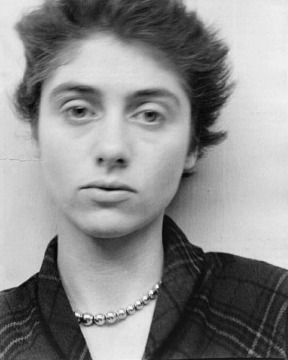
Diane Arbus was an American photographer. She photographed a wide range of subjects including strippers, carnival performers, nudists, people with dwarfism, children, mothers, couples, elderly people, and middle-class families. She photographed her subjects in familiar settings: their homes, on the street, in the workplace, in the park. "She is noted for expanding notions of acceptable subject matter and violates canons of the appropriate distance between photographer and subject. By befriending, not objectifying her subjects, she was able to capture in her work a rare psychological intensity." In his 2003 New York Times Magazine article, "Arbus Reconsidered", Arthur Lubow states, "She was fascinated by people who were visibly creating their own identities—cross-dressers, nudists, sideshow performers, tattooed men, the nouveaux riches, the movie-star fans—and by those who were trapped in a uniform that no longer provided any security or comfort." Michael Kimmelman writes in his review of the exhibition Diane Arbus Revelations, that her work "transformed the art of photography ". Arbus's imagery helped to normalize marginalized groups and highlight the importance of proper representation of all people.

Hannah Szenes was a Hungarian Jewish poet and a Special Operations Executive (SOE) member. She was one of 37 Jewish SOE recruits from Mandate Palestine parachuted by the British into Yugoslavia during the Second World War to assist anti-Nazi forces and ultimately in the rescue of Hungarian Jews about to be deported to the German death camp at Auschwitz.

Judy Chicago is an American feminist artist, art educator, and writer known for her large collaborative art installation pieces about birth and creation images, which examine the role of women in history and culture. During the 1970s, Chicago founded the first feminist art program in the United States at California State University, Fresno which acted as a catalyst for feminist art and art education during the 1970s. Her inclusion in hundreds of publications in various areas of the world showcases her influence in the worldwide art community. Additionally, many of her books have been published in other countries, making her work more accessible to international readers. Chicago's work incorporates a variety of artistic skills, such as needlework, counterbalanced with skills such as welding and pyrotechnics. Chicago's most well known work is The Dinner Party, which is permanently installed in the Elizabeth A. Sackler Center for Feminist Art at the Brooklyn Museum. The Dinner Party celebrates the accomplishments of women throughout history and is widely regarded as the first epic feminist artwork. Other notable art projects by Chicago include International Honor Quilt, Birth Project, Powerplay, and The Holocaust Project. She is represented by Jessica Silverman gallery.

Lucy Dawidowicz was an American historian and writer. She wrote books about modern Jewish history, in particular, about the Holocaust.
The Holocaust has been a prominent subject of art and literature throughout the second half of the twentieth century. There is a wide range of ways–including dance, film, literature, music, and television–in which the Holocaust has been represented in the arts and popular culture.
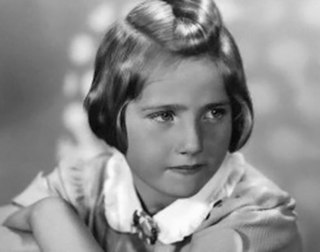
Hanička "Hana" Brady was a Czechoslovak Jewish girl murdered in the gas chambers at German concentration camp at Auschwitz, located in the occupied territory of Poland, during the Holocaust. She is the subject of the 2002 non-fiction children's book Hana's Suitcase, written by Karen Levine.

Czesława Kwoka was a Polish Catholic girl who was murdered at the age of 14 in Auschwitz. One of the thousands of minor child and teen victims of German World War II war crimes against ethnic Poles in German-occupied Poland, she is among those memorialized in an Auschwitz-Birkenau State Museum exhibit, "Block no. 6: Exhibition: The Life of the Prisoners".
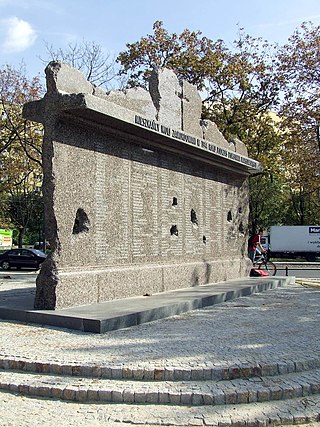
Crimes against the Polish nation committed by Nazi Germany and Axis collaborationist forces during the invasion of Poland, along with auxiliary battalions during the subsequent occupation of Poland in World War II, included the genocide of millions of Polish people, especially the systematic extermination of Jewish Poles. These mass killings were enacted by the Nazis with further plans that were justified by their racial theories, which regarded Poles and other Slavs, and especially Jews, as racially inferior Untermenschen.
Holocaust victims were people targeted by the government of Nazi Germany based on their ethnicity, religion, political beliefs, or sexual orientation. The institutionalized practice by the Nazis of singling out and persecuting people resulted in the Holocaust, which began with legalized social discrimination against specific groups, involuntary hospitalization, euthanasia, and forced sterilization of persons considered physically or mentally unfit for society. The vast majority of the Nazi regime's victims were Jews, Sinti-Roma peoples, and Slavs but victims also encompassed people identified as social outsiders in the Nazi worldview, such as homosexuals, and political enemies. Nazi persecution escalated during World War II and included: non-judicial incarceration, confiscation of property, forced labor, sexual slavery, death through overwork, human experimentation, undernourishment, and execution through a variety of methods. For specified groups like the Jews, genocide was the Nazis' primary goal.

The Holocaust had a deep effect on society both in Europe and the rest of the world, and today its consequences are still being felt, both by children and adults whose ancestors were victims of this genocide.
Gay Block is a fine art portrait photographer, who was born in Houston, Texas. Her work has been published in books, and is collected by the Museum of Modern Art, the San Francisco Museum of Modern Art, the Museum of Fine Arts, Houston, the El Paso Museum of Art, the Jewish Museum (Manhattan) and the New Mexico Museum of Art.
Poems about Babi Yar commemorate the massacres committed by the Nazi Einsatzgruppe during World War II at Babi Yar, in a ravine located within the present-day Ukrainian capital of Kyiv. In just one of these atrocities – taking place over September 29–30, 1941 – 33,771 Jewish men, women and children were killed in a single Einsatzgruppe operation.
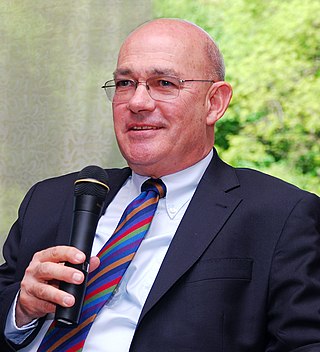
Tom Segev is an Israeli historian, author and journalist. He is associated with Israel's New Historians, a group challenging many of the country's traditional narratives.
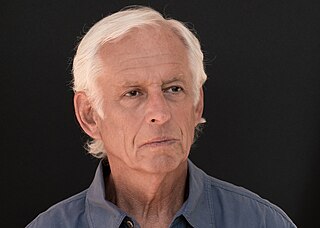
Richard M. Ehrlich is a surgeon and photographer. Born in New York City on March 12, 1938, he obtained a BA in 1959 from Cornell University, where he was a member of the Quill and Dagger society. He has been a professor and physician for over 40 years, and has been recognized as a fine art photographer. The New York Times said his photographs "suggest ephemerality from a broader historical perspective" and that they "look like staged fantasies".

Rose Mandel was a Polish-born American photographer, who was awarded a Guggenheim Fellowship in 1967.
Claudia Maria Cornwall is a Canadian writer and journalist. Her second non-fiction book, the autobiographical Letter from Vienna: A Daughter Uncovers her Family's Jewish Past won the 1996 Hubert Evans Non-Fiction Prize.

The Ivanhorod Einsatzgruppen photograph is a prominent depiction of the Holocaust in Ukraine, on the Eastern Front of World War II. Dated to 1942, it shows a soldier aiming his rifle at a woman who is trying to shield a child with her body, portraying one of numerous genocidal killings carried out against Jews by the Einsatzgruppen within German-occupied Europe. It was taken in Ivanhorod, a village in German-occupied Ukraine, before being mailed to Nazi Germany. However, the Polish resistance intercepted the photograph in Warsaw, and it was subsequently kept as Holocaust imagery by Polish photographer Jerzy Tomaszewski. In the 1960s, it was alleged that the photograph was a communist forgery, but that claim was eventually proven false. Since then, it has been frequently used in books, museums, and exhibitions focused on the Holocaust. British photographic historian Janina Struk describes it as "a symbol of the barbarity of the Nazi regime and their industrial-scale murder of six million European Jews."
Margarete Kraus was a Roma woman who was persecuted during the Porajmos, imprisoned at Auschwitz and Ravensbruck. Her experience was recorded in later life by the photographer Reimar Gilsenbach.
References
- 1 2 Topics (2013). Holocaust Forgotten - Five Million Non-Jewish Victims by Terese Pencak Schwartz. Goodreads Inc. ISBN 978-1475282498 . Retrieved 6 October 2013.
- ↑ Terese Pencak Schwartz, Christine Ticali (2013). Holocaust Forgotten: Five Million Non-Jewish Victims. The Book Depository Limited, Slough. ISBN 9781475282498 . Retrieved 6 October 2013.
{{cite book}}:|work=ignored (help) - 1 2 Inauthor (2012). Holocaust Forgotten: Five Million Non-Jewish Victims by Terese Pencak Schwartz. T. Schwartz. ISBN 978-1475282498 . Retrieved 6 October 2013.
- ↑ Terese Pencak Schwartz (1997). "Five Million Forgotten". Holocaust: Non Jewish Victims of the Shoah. Remember.org. Retrieved 6 October 2013.
- Louis R. Eltscher (2013). Traitors Or Patriots?: A Story of the German Anti-Nazi Resistance. iUniverse. p. 375. ISBN 9781475981421 . Retrieved 6 October 2013.
{{cite book}}:|work=ignored (help)